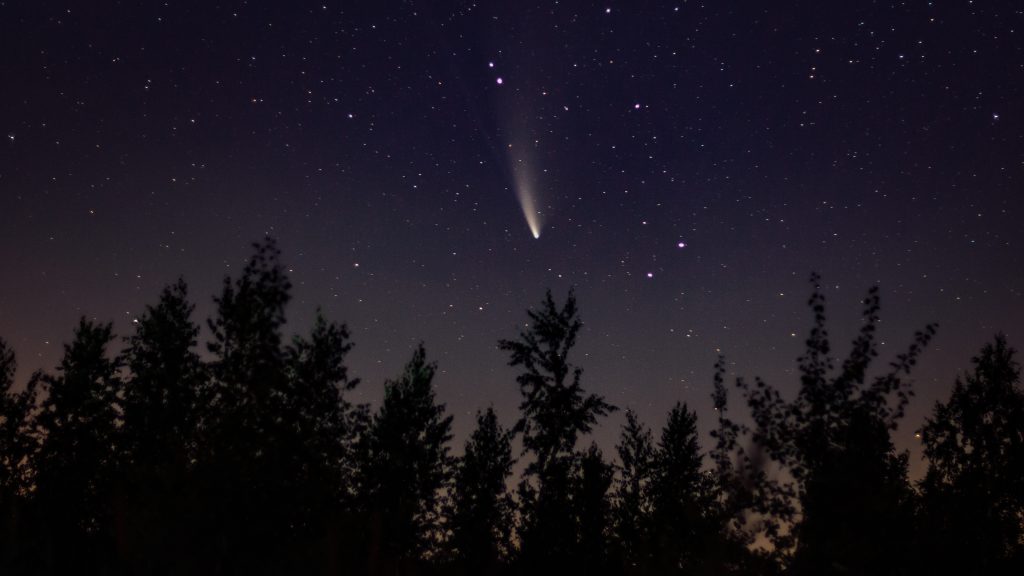On April 10, Jupiter and the two-day crescent moon will be observed in a special conjunction, and Uranus and the comet of the year, 12P/Pons-Brooks, will also be visible with the help of a hand-held telescope, informed the Svábhegy Observatory.
On April 10th, Jupiter, which still shines in the early spring evenings, and to its right, only 3.5 degrees, the 5 percent phase, 2-day, thread-thin crescent moon will be clearly visible with the naked eye. At 8:20 p.m., the pair is still at a height of 15 degrees at the bottom of the western sky. The celestial bodies will be easily visible with the naked eye if the western horizon is clear and free of landmarks, the announcement reads.
As written, the blue-green planet Uranus - which is barely two degrees above Jupiter - will also appear in the sky, as well as one of the most beautiful comets of the year, 12P/Pons-Brooks, which can be seen 3 degrees below the crescent moon.
According to the information, it is worth waiting until the sky is completely dark to see the fainter Uranus and the comet, which is not visible to the naked eye. Around 8:50 p.m., both celestial bodies can be observed in the night sky, but by that time the Jupiter-Moon pair has sunk to a height of 10 degrees, and the comet to only 7 degrees. To see them, you need a clear sky and a larger hand-held telescope.
Jupiter, which is at the end of its visibility, returned to the morning sky in May 2023, but as it approaches the Sun, it slowly disappears in the light of the evening twilight. This is also the last chance to view Uranus.
Comet 12P/Pons-Brooks will reach perihelion, i.e. the closest point of its orbit to the Sun, on April 21st, but then it will no longer be visible. It will next come close to Earth again in 71 years. Like Jupiter and Uranus, 12P/Pons-Brooks will be visible during the evening.
The almost exactly 2-day crescent moon with 5 percent illumination will still be visible. The glow of the moon's unilluminated side, the ash-gray light, will be clearly visible to the naked eye, the announcement reads.
Between April 11 and 13, interested parties can also observe the craters of the ever-growing spring crescent at the Svábhegy Star Observatory, the summary states.
MTI
Featured image: Getty Images












